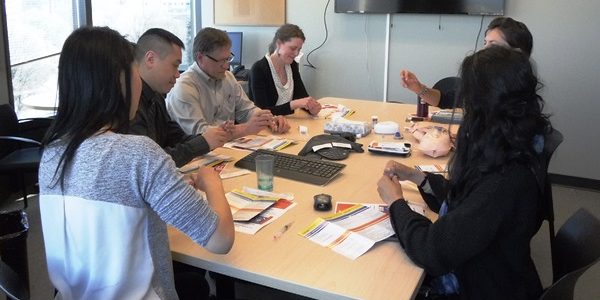OD 101 for Environmental Health Officers
“Five years ago when I started my job I never thought I’d get naloxone training for my job,” says Environmental Health Officer (EHO) Denny Huang. “But I think it’s important for EHOs to adapt to timely and growing problems in public health. The more people who are trained the better.”
Denny and four other Vancouver EHO’s learned how to recognize the signs of an overdose and how to appropriately respond, including how to administer naloxone.
EHO’s spend a lot of their time out in the community, as they inspect restaurants, food trucks, and tattoo parlours to ensure they are safe. Richard Taki, Executive Director, Health Protection, says, “We saw an opportunity for EHOs to carry naloxone kits after reviewing statistics showing that many of the overdose deaths occurred outside the DTES, away from the main services/responders, but are visited daily by our district EHOs.”
Overdoses can happen to anyone
“It’s a widespread problem. This is taking people’s fathers, mothers, sons. I lost a friend to an overdose two years ago. He wasn’t addicted – he was a recreational user, party drugs. It was something we hear all the time – he took the drugs while at home alone. His girlfriend discovered him the next morning. Really sad.”
Resources
If you think this training would be appropriate for your staff contact Rebecca.thomas@vch.ca.
Personally if you’d like to take this training because you or others around you are at risk of an overdose check out our map of training availability.
For more information about overdoses visit the VCH overdose webpage.

